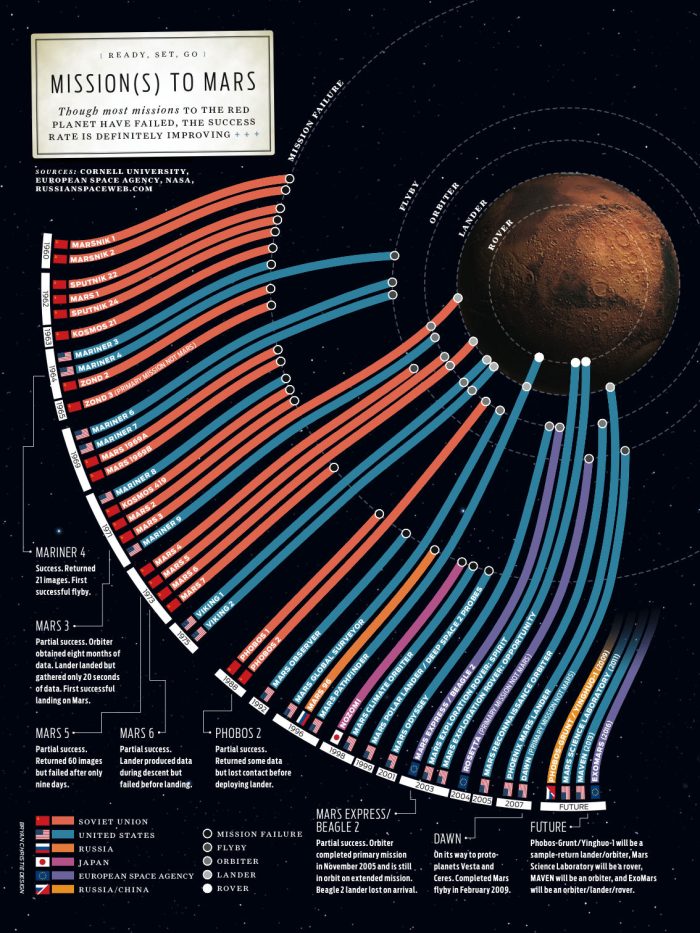
As soon as we conquered the moon we immediately set our sites on the next frontier… Mars! Here is a history of our expeditions to the red planet.
Mariner 4
In the annals of Mars exploration, the Mariner 4 holds a special place. Launched by NASA in 1964, it became the first spacecraft to successfully capture close-up images of Mars. This historic flyby mission returned 21 images, offering humankind its first real glimpse of the Red Planet (NASA). Can you imagine the thrill of receiving these first snapshots from an alien world?
Mars 3
Fast forward to 1971, when the Soviet Union’s Mars 3 mission accomplished another significant feat: the first successful Mars landing. Despite losing contact seconds after landing, Mars 3’s brief transmission from the Martian surface marked a groundbreaking achievement in interplanetary exploration (NASA). It’s a bit like sending a postcard home from a distant vacation spot, isn’t it?
Mars 5
Succeeding Mars 3, the Mars 5 mission in 1973 had its share of drama. The orbiter managed to capture 60 images of Mars, but its success was short-lived. After only nine days, the spacecraft failed, leaving us to wonder what more we might have learned (NASA). It’s like binge-watching a great show, only for it to get canceled mid-season!
Mars 6
The Mars 6 mission in 1974 was a story of partial success. The lander produced valuable data during its descent to the Martian surface. Unfortunately, it failed before landing, leaving a tantalizing taste of the knowledge that might have been gleaned (NASA). Imagine getting halfway through a mystery novel, only to find the last pages missing!
Phobos 2
In 1989, the Soviet Union’s Phobos 2 mission offered both hope and disappointment. While it returned some data, the mission lost contact before it could deploy its lander. It’s like sending a text and never hearing back, isn’t it?
Mars Express / Beagle 2
The Mars Express mission, launched in 2003, has been a tale of two halves. While the orbiter completed its primary mission and continues to orbit Mars, the Beagle 2 lander was lost on arrival (European Space Agency). It’s a bit like acing the first part of a test but blanking on the second, don’t you think?
Dawn
More recently, NASA’s Dawn spacecraft completed a Mars flyby in February 2009, adding yet another chapter to our ongoing exploration of the Red Planet (NASA). Can you imagine the excitement of continuing to unravel this cosmic mystery?
Reflecting on the Journey
While we’ve come a long way in our understanding of Mars, the journey hasn’t been without its setbacks. Many missions have faced challenges, from lost landers to short-lived successes. Yet, each mission, successful or not, has contributed to our growing knowledge of Mars and our place in the universe (NASA). Isn’t it fascinating to reflect on how far we’ve come, and how much further we have yet to go?
